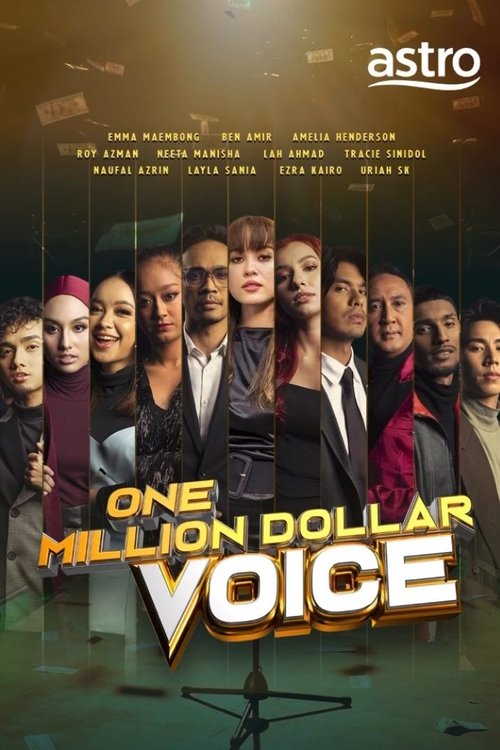
Ask Your Own Question
What is the plot?
In the opening scene of "Kelentang Kelentung Pom Pom," we are introduced to the vibrant town of Kampung Pom Pom, where the annual festival is about to take place. The camera pans over colorful decorations and excited townsfolk preparing for the festivities. The protagonist, a spirited young girl named Lila, is seen helping her grandmother, who is known for her traditional pom pom crafts. Lila is eager to participate in the festival, dreaming of winning the pom pom competition.
As the festival begins, Lila's best friend, Amir, joins her. They share a moment of excitement as they discuss their hopes for the competition. Lila reveals her desire to create the biggest and most colorful pom pom, while Amir is more focused on having fun. The atmosphere is filled with laughter and music, showcasing the community's close-knit bonds.
During the first day of the festival, Lila and Amir encounter a mysterious newcomer, a boy named Rafi, who has a talent for crafting intricate pom poms. Rafi's skills impress everyone, including Lila, who feels a mix of admiration and jealousy. As they interact, Rafi challenges Lila to a pom pom-making contest, which she reluctantly accepts, feeling the pressure to prove herself.
The next sequence shows Lila working tirelessly on her pom pom, gathering materials and experimenting with different designs. Her determination is palpable, but she also feels the weight of expectations from her grandmother and the community. Meanwhile, Amir tries to lighten the mood by suggesting they take breaks and enjoy the festival, but Lila is too focused on her goal.
As the competition day arrives, the town square is bustling with excitement. Lila, Amir, and Rafi present their pom poms to the judges. Lila's creation is vibrant and large, but Rafi's intricate design captivates the audience. The judges deliberate, and the tension builds as Lila anxiously awaits the results. When Rafi is announced as the winner, Lila feels a mix of disappointment and admiration, struggling to accept her loss.
In the aftermath of the competition, Lila confronts Rafi, expressing her frustration and jealousy. Rafi, understanding her feelings, encourages her to see the beauty in creativity rather than just competition. This moment marks a turning point for Lila, who begins to appreciate the joy of crafting rather than solely focusing on winning.
As the festival continues, Lila decides to collaborate with Rafi and Amir to create a community pom pom installation, combining their talents. This decision reflects her growth and willingness to embrace teamwork. The trio works together, blending their styles and ideas, which strengthens their friendship and fosters a sense of community.
The climax of the season occurs during the final day of the festival when the community unveils the collaborative pom pom installation. The townsfolk are amazed by the creativity and unity displayed in their work. Lila feels a sense of pride and fulfillment, realizing that the experience was more valuable than winning a competition.
In the closing scenes, Lila reflects on her journey, understanding that the festival is not just about individual achievements but about celebrating togetherness and creativity. The season ends with a heartwarming montage of the townspeople enjoying the festival, with Lila, Amir, and Rafi at the center, laughing and sharing their love for pom pom crafting. The camera fades out on the colorful installation, symbolizing the bonds formed through their shared passion.
Related Titles
Browse All Titles →
What is the ending?
Is there a post-credit scene?
In "Kelentang Kelentung Pom Pom," Season 1, there is indeed a post-credit scene that adds an intriguing layer to the narrative.
As the credits roll, the screen fades to black before transitioning to a dimly lit room filled with various traditional musical instruments. The camera slowly pans across the room, revealing a large, ornate gong at the center. The atmosphere is thick with anticipation, and a soft, mysterious melody begins to play in the background.
Suddenly, a figure steps into the frame, partially obscured by shadows. The character is revealed to be one of the supporting characters, who has been a source of comic relief throughout the season. They approach the gong with a mischievous grin, glancing around as if ensuring no one is watching.
With a dramatic flourish, they strike the gong, producing a resonant sound that echoes through the room. As the sound reverberates, the camera zooms in on their face, which shifts from playful to serious. In that moment, they whisper a cryptic message about a hidden secret tied to the main characters' journey, hinting at challenges yet to come in future seasons.
The scene ends with the camera focusing on the gong, which begins to glow faintly, suggesting that it holds more significance than initially perceived. The screen fades to black once more, leaving viewers with a sense of curiosity and excitement about what lies ahead. This post-credit scene effectively teases future plot developments while maintaining the show's whimsical tone.
What motivates the main character, Aisha, to pursue her dream despite the challenges she faces?
Aisha is driven by her passion for music and a deep-seated desire to prove herself to her family and community. Throughout the season, she grapples with self-doubt and the fear of failure, but her love for performing and the support of her friends push her to overcome obstacles.
How does the relationship between Aisha and her best friend, Rina, evolve throughout the season?
Initially, Aisha and Rina share a close bond, but as Aisha's ambitions grow, Rina feels neglected and struggles with feelings of jealousy. This tension culminates in a confrontation where they express their fears and insecurities, ultimately leading to a deeper understanding and reconciliation.
What role does the character of Mr. Tan play in Aisha's journey?
Mr. Tan serves as a mentor figure for Aisha, providing guidance and encouragement. He recognizes her talent and helps her navigate the competitive music scene, but he also challenges her to confront her fears, pushing her to grow both as an artist and as an individual.
What is the significance of the annual music festival in the story?
The annual music festival acts as a pivotal event that symbolizes Aisha's aspirations and the culmination of her hard work. It represents not only a chance for her to showcase her talent but also a moment of reckoning for her relationships and personal growth.
How does Aisha's family react to her musical ambitions, and how does this affect her?
Aisha's family is initially skeptical of her musical ambitions, prioritizing traditional career paths over her passion. This creates internal conflict for Aisha, as she seeks their approval while also yearning to follow her dreams. Their eventual acceptance becomes a crucial turning point in her journey.
Is this family friendly?
"Kelentang Kelentung Pom Pom" is generally considered family-friendly, but it does contain some scenes that may be sensitive for younger viewers or those who are particularly sensitive.
-
Emotional Conflict: There are moments of family tension and conflict that may evoke feelings of sadness or discomfort, particularly during arguments or misunderstandings between characters.
-
Loss and Grief: The show touches on themes of loss, which may be upsetting for children or sensitive viewers. Characters may express sadness or deal with the absence of loved ones.
-
Mild Scares: Some scenes may include mild suspense or moments that could be startling, such as unexpected events or surprises that could provoke a jump scare reaction.
-
Social Issues: The series addresses social dynamics and peer pressure, which may resonate with children but could also lead to feelings of anxiety or discomfort regarding fitting in or being accepted.
-
Mild Language: There are instances of mild language that may not be suitable for very young children, though it is not excessive.
Overall, while the show is designed for a family audience, parents may want to preview certain episodes to gauge their appropriateness for their children.


















